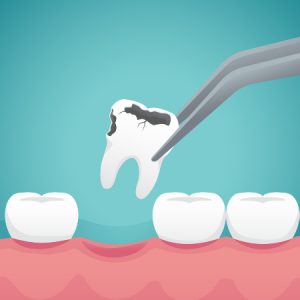
What Is Dry Socket?
What to know after an extraction.
You probably know that missing a tooth can cause problems. Of course, it leaves behind a gap in your smile, affecting your appearance. But it can also impact your ability to eat properly and cause other oral health problems. Yes, a missing tooth is never ideal. However, sometimes a tooth extraction becomes necessary when too much damage or decay is present. In these instances, be aware that dry socket may occur in the days following a tooth extraction. Although it can be painful, dry socket (luckily) does not have any long-term health implications.
What causes dry socket?
After tooth extraction, it’s important for tissue to heal correctly. This process sets the stage for successful restorations and a healthy smile! But dry socket can be a painful setback. If the blood clot becomes dislodged from the extraction site, it leaves bone and nerve endings exposed. When this happens, it may cause pain or sensitivity.
Dry socket most commonly occurs about 3 to 4 days after an extraction, and wisdom teeth are especially susceptible. Women who use oral contraceptives may also be at higher risk for developing the condition.
How to prevent it.
To avoid it, do not smoke or use straws when drinking. These activities create suction and pressure within the mouth that can dislodge the healing clot. Additionally, avoid brushing the area too aggressively or too soon after treatment. Drinking hot liquids may also cause disruption.
How is it treated?
Again, although the condition can be painful, the long-term outlook is good. We can treat it by dressing the area to protect it while healing occurs.
If you are experiencing pain or sensitivity following a tooth extraction, please don’t hesitate to call our office.
